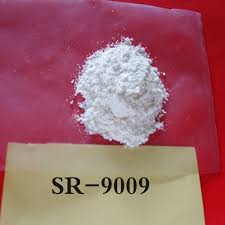
- +86-13363869198
- weimiaohb@126.com

Jan . 01, 2025 11:05 Back to list
Wholesale Phthalic Acid CAS 88-99-3 for Industrial Applications and Chemical Manufacturing
Understanding Phthalic Acid Applications, Sources, and Market Trends
Phthalic acid, with the chemical formula C8H6O4 and CAS number 88-99-3, is a significant industrial chemical known for its versatile applications across various industries. This aromatic dicarboxylic acid plays a pivotal role in the manufacture of numerous essential compounds, making it a focal point in discussions about industrial chemicals and materials.
What is Phthalic Acid?
Phthalic acid is a colorless, odorless solid that is soluble in alcohol, ether, and aromatic hydrocarbons. It is primarily produced through the oxidation of ortho-xylene, a process that involves high temperatures and specific catalysts to yield a high-purity product. Phthalic acid serves as a precursor for the production of phthalate esters, which are commonly used as plasticizers. Additionally, it acts as a building block for dyes, resins, and other important industrial chemicals.
Applications of Phthalic Acid
The primary application of phthalic acid is in the production of plasticizers, which are substances added to plastics to increase flexibility, transparency, durability, and longevity. Among the most common phthalate esters produced from phthalic acid are diethyl phthalate (DEP), dibutyl phthalate (DBP), and di(2-ethylhexyl) phthalate (DEHP). These compounds are extensively used in polyvinyl chloride (PVC) products, which are ubiquitous in construction materials, toys, and medical devices.
Furthermore, phthalic acid is utilized in the synthesis of alkyd resins, which are critical components in paints, coatings, and adhesives. The resin’s properties, including chemical resistance and durability, make it a favorite choice for both industrial and consumer applications. Additionally, phthalic acid is used in the production of unsaturated polyester resins, which are important for the automotive and marine industries due to their lightweight and corrosion-resistant characteristics.
Health and Environmental Considerations
wholesale cas 88-99-3 phthalic acid

Despite its widespread use, phthalic acid and its derivatives have raised significant health and environmental concerns. Certain phthalates have been classified as endocrine disruptors, which can interfere with hormonal systems in humans and wildlife. This has led to increased scrutiny and regulations surrounding the use of phthalate esters in consumer products, particularly in toys and childcare items.
Recent shifts in consumer behavior and regulatory frameworks have prompted manufacturers to explore alternative plasticizers and materials. As a result, there is a growing trend towards the development of bio-based products and non-phthalate alternatives. This transition not only addresses health concerns but also aligns with increasing demands for sustainable and eco-friendly practices within the chemical industry.
Market Trends and Projections
Understanding the wholesale market dynamics for phthalic acid involves analyzing supply and demand, production capacities, and pricing trends. The global phthalic acid market is influenced by various factors, including the expansion of the construction and automotive sectors, which directly impacts the demand for plasticizers and resins. Emerging economies are driving growth in these industries, particularly in Asia-Pacific regions.
As of late 2023, prices for phthalic acid have shown fluctuations due to raw material costs, production capacities, and changing regulatory landscapes. Manufacturers are adapting by investing in innovative production processes and developing alternative chemicals that meet both industry standards and consumer preferences for safer products.
Conclusion
Phthalic acid remains a critical chemical within multiple industrial sectors. While its applications are vast, ongoing concerns regarding health and environmental impacts necessitate an industry-wide shift towards safer alternatives. As the market continues to evolve, the integration of sustainable practices and the development of innovative solutions will be key in shaping the future of phthalic acid and its derivatives. Manufacturers, regulators, and consumers alike must remain vigilant and proactive in seeking balance between industrial growth and environmental responsibility.
-
GS-441524 White Liquid Production for Factories | AI-Optimized
NewsAug.02,2025
-
AI-Optimized CAS: 79099-07-3 Factories for High Yield
NewsAug.01,2025
-
Premium CAS 1451-83-8 Factory with GPT-4 Turbo | AI-Optimized
NewsJul.31,2025
-
Pharmaceutical Intermediates - AI-Optimized Synthesis & Purity
NewsJul.31,2025
-
Top CAS: 79099-07-3 Factories & Wholesale Supplier from China
NewsJul.30,2025
-
High-Quality GS-441524 for White Liquid Type Factories & Suppliers
NewsJul.29,2025